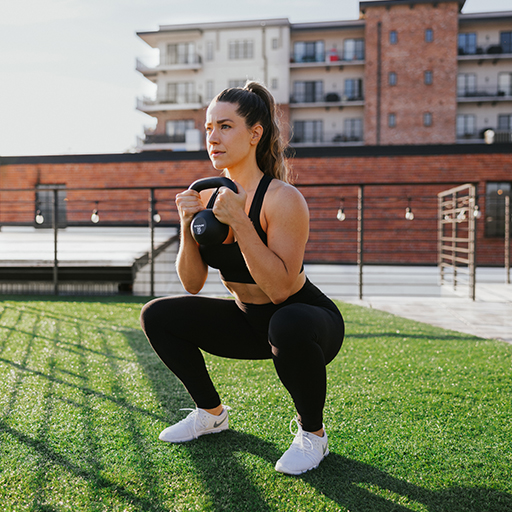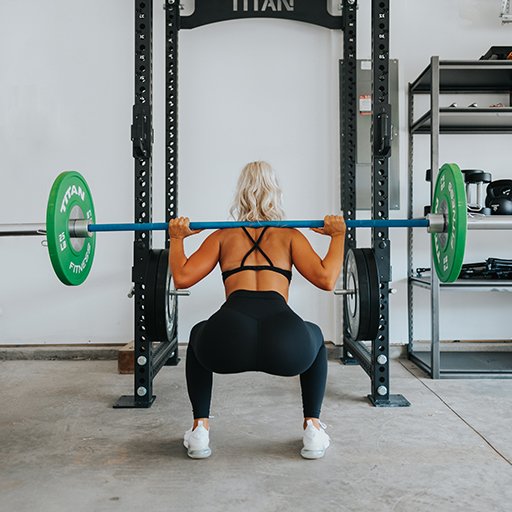A customized workout schedule can be a fun and rewarding experience – not to mention a goal many people strive to achieve. Finding the right combination of cardio exercise, strength training, and rest days can help you fine-tune your body to get into optimal shape. But many people trying to get on a regular schedule have many questions about how to build a workout routine that gets results.
When you are just getting started on the path to designing your workout program, there are a ton of variables to consider. What kinds of exercises are best for your body? How many sets and reps do you need to gain muscle? How many days off should you take? How quickly should you increase the amount of weight you are lifting, the length of time spent training, etc.? The list goes on and on! This guide takes an in-depth look at everything you need to know about building a workout routine so you can get started on your own.
Whether you are a seasoned weightlifter looking to update your exercise schedule or designing your first workout plan, read on to learn everything you need to know about building a workout routine that works for you.

How to Build a Workout Routine
When designing a workout routine, there are a few key questions you will want to consider.
What are your goals?
First things first: what do you want to accomplish with your workout routine? Are you trying to lose weight? Do you want to build muscle? Are you training for a 5k or a marathon? Whatever your goals, you should write them down and keep them top of mind so you know what you want to achieve. Your goals will direct you on how to build a workout routine that gets you where you want to go.
When creating goals of any kind – but specifically when it comes to fitness goals – try using the SMART method. SMART is an acronym for:
Specific: Make sure your goals outline what you are trying to accomplish in a clear and concise way.
Measurable: Your goals must allow you to measure your progress. For example, maybe you want to lose 5 pounds by a specific date. Or, perhaps you would like to be able to do ten bench presses with a certain amount of weight. Whatever your goals are, you need to make sure you can connect them to tangible progress markers.
Attainable: Make sure your goals are realistic. Depending on your body weight and BMI, losing weight, gaining muscle mass, etc., will take different amounts of time.
Relevant: Keep your goals relevant to your interests, likes/dislikes, abilities, etc. For example, if you hate running or have a leg injury, setting a goal to run x amount of miles won’t be relevant.
Timely: Make a timeline for your goals that ensures that you stick to a steady schedule without putting yourself at risk for injury.
What has worked in the past?
If a particular type of training has worked for you in the past, the odds are pretty good that you can continue with that training and see results. Consider the types of exercise that made you feel excited about training – and the types that you didn’t enjoy. That way, you will have a baseline of activities to start with.

How much time do you have to devote to your workout goals?
You also have to determine the level of commitment that you can devote to your goals and training. This will be primarily based on your work schedule, lifestyle, family life, social obligations, etc. Training 3-5 days per week is a good goal for most people. Once you have figured out how many days a week you will train, you can start to schedule your days to design a training split and training frequency.
Training frequency
Training frequency refers to how often you will train a muscle. Usually, people start with training a muscle group 2-3 times per week. This means 12-18 total sets per week. Of course, it’s a good idea to experiment with the amount of training and sets you do in order to find the best results and track your progress early on.
Training Split
Training split refers to splitting up which workouts will train which muscle groups. If you train 2-3 days per week, you might consider doing a full body split. This means that each day you work out, you are working on your full body instead of just one set of muscle groups. If you train more frequently, you will want to factor that into how to build a workout routine. You might spend two days on your upper body, two days on your lower body, etc.
How long will you give yourself to reach your goals?
Make sure that you set realistic timeframes for gaining muscle or losing weight. If you’re trying to lose weight, the best way is to maintain a calorie deficit by consuming 250-500 fewer calories per day than your normal calorie intake. This should result in losing 1-2 pounds per week.
If your goal is to gain muscle mass, aim for a calorie surplus by adding 250-500 calories to your normal calorie intake. This results in gaining lean muscle mass of about .5 pounds per week.
What exercise and movements should you include?
There are so many different exercises to choose from – it can be overwhelming when you are figuring out how to build a workout routine. The most important factor for strength, muscle gain, and general fitness is to create a workout program that builds a foundation for success in the future. Here are a few of the most important considerations when you’re deciding how to build a workout routine.
Bodyweight movements
Bodyweight movements are pretty much just what they sound like. They are exercises where you are moving your own body weight vs. lifting or pressing weights. Developing a firm grasp of bodyweight movements can help you develop a better form in other movements. The main bodyweight movements include push-ups, pull-ups, lunges, single-leg squats, jumping, and more.
Compound exercises
Compound movements are key for building muscle. These are movements that stress multiple muscle groups at the same time. This means they involve multiple joints flexing, extending, and/or rotating in unison with each other. They train more muscles at once, making them more time-efficient and increasing loading stress. Common compound movements include the deadlift, rows, and the overhead press.

However, compound lifting can also have some disadvantages to watch out for. It can be difficult to isolate muscles, muscle fatigue can sometimes make the movements less effective, and it can be challenging to address movement imbalances.
Accessory movements
Accessory movements exist to support the main lifts in your workout and help support your growth over time. They add additional balance, coordination, and strength to your workout goals. Accessory movements are a great way to add variety, creativity, and fun to your workouts.
It’s Time to Begin Your Fitness Journey
When you’re deciding how to build a workout routine that works for your body, it’s hard to go wrong with a full-body program. It can help you establish a workout routine while also keeping your schedule super simple, and they let you train the main muscle groups multiple days per week. Full-body workouts are also great if your goal for working out is for your general health rather than for aesthetics. And another perk is that they require much less time, whether you are working out in a gym or in your home gym.
At Titan Fitness, we have all the equipment you need to achieve your workout goals. Our home gym equipment can help you figure out how to build a workout routine that makes your body look and feel great in no time.


